#hays code
Explore tagged Tumblr posts
Text
Since no one does their own research anymore:
The Hays Code was a set of industry guidelines that governed moral content in Hollywood films from 1930s - 1960s, restricting depictions of sex, crime, and other behaviour deemed “immoral”. It was problematic because it enforced rigid, conservative moral standards that suppressed artistic freedom, censored diversity, and reinforced harmful stereotypes about gender, race and sexuality.
One of the most extreme cases of the Hays Code was heavy censorship of the film The Outlaw, where huge controversy erupted over Jane Russell’s cleavage. The Code Administration delayed the film’s release for years, obsessively policing her appearance even more than the film’s violent content.
Another one: The Best Years of Our Lives, a story about WWII veterans struggling with trauma, alcoholism, and disability, had to soften depictions of PTSD and related issues due to restrictions against portraying American institutions/citizens in a negative light.
now say it with me: authors/artists dont owe you moral purity. an author/artist job is not to hold you by the hand & tell you exactly what is Good™ & what is Bad™. you should be able to think for yourself
53K notes
·
View notes
Text

Pre-Code refers to a time of relaxed censorship: The pre-Code era was a period from roughly 1929 to 1934 where the Motion Picture Production Code (also known as the Hays Code) was in place but not strictly enforced. This allowed filmmakers more freedom to explore controversial topics and include content that would later be restricted. American movies, for instance, were at their most raucous and racy, a time when illicit sex and violence were common themes.
#pre code#vintage hollywood#old hollywood#screen legend#movie star#1930s#actress#1920s#talkies#film makers#hays code
17 notes
·
View notes
Text
There are so many moments in Rope (1948) where Phillip is leaning against Brandon or closer to Brandon or into Brandon and it’s like damn dude we know you want your boyfriend to hold you so bad but the Hays code said he can’t
230 notes
·
View notes
Text

best summary of this film ive ever read
#if you watch it & can't understand what their conflict is if theyre both so super-hot. the reason is in the above tweet#elizabeth taylor#paul newman#cat on a hot tin roof#queer#gay#lgbt#queer characters#hays code#classic movies#old hollywood#classic hollywood#1950s#vintage#photography#production still#richard brooks#tweet#queer media#book adaptation
2K notes
·
View notes
Text
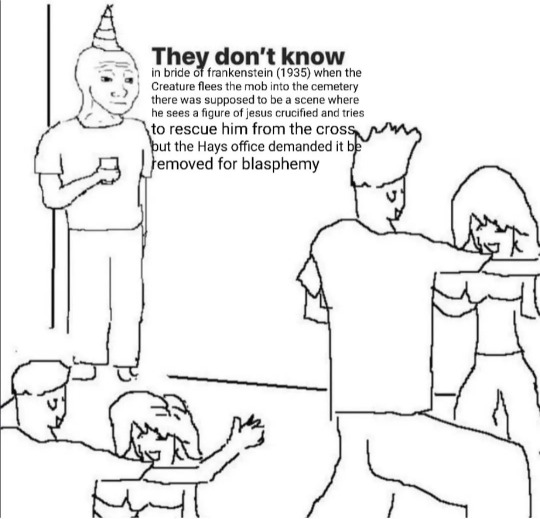
Thinking about her (bride of Frankenstein) again
#the bride of frankenstein (1935)#the bride#frankenstein#universal horror#classic horror#boris karloff#hays code#james whale#movies ive seen
96 notes
·
View notes
Text
Fondly remembering that time in the early 2000s when my mother and I stumbled on a (illegal) Christian Movie website that edited out anything ‘not Christian’ out of all your faves by cutting out entire scenes and bleeping curse words, and that special moment when we saw ‘H*llboy’s’ runtime being under 20 minutes and absolutely lost it.
1K notes
·
View notes
Note
Was the Comics Code as bad as the Hays Code?
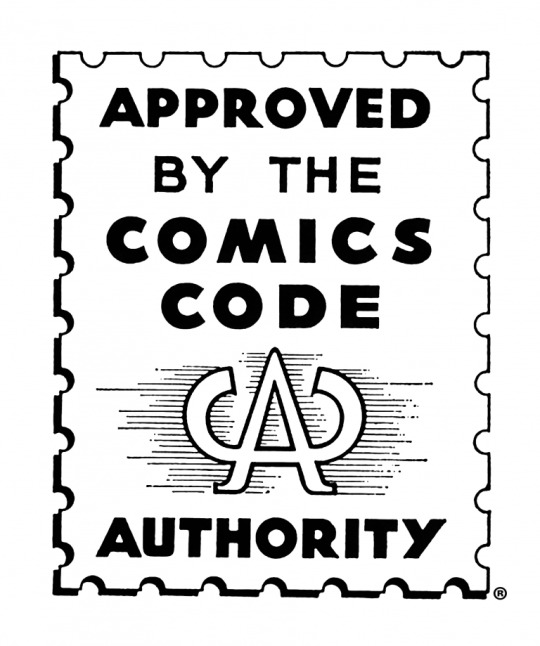
That's a really good question!
I suppose it depends on what you mean by "as bad" - are we talking about the overall impact of the Code on American pop culture or are we talking about the actual content of the Code and what it banned and/or mandated in terms of artistic expression?
I've written a little bit about the Hays Code here, but my main focus was on subtextual judaism in Hollywood generally rather than what the Code was and what its impact on American cinema was.
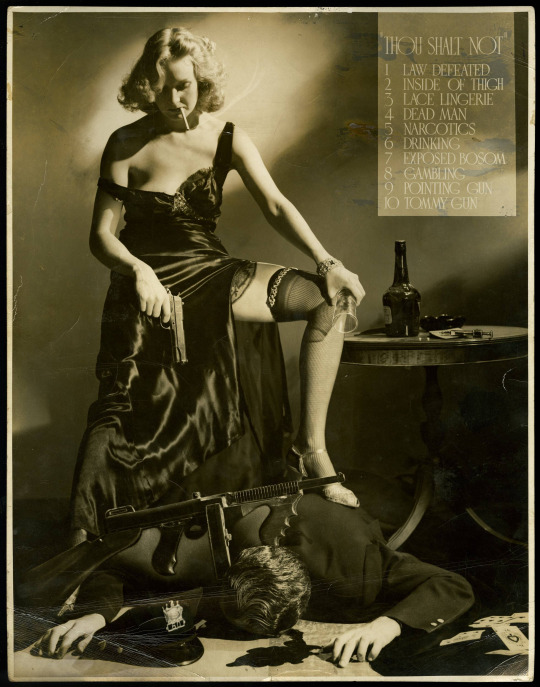
So what did the Hays Code actually include?
One of the few positive things you can say about it is that the men who devised it were quite clear and forthright about what would and wouldn't be allowed, in comparison to the vagueness and inconsistency of the modern MPAA. So here's the list of what couldn't be shown:
Pointed profanity—by either title or lip—this includes the words God, Lord, Jesus, Christ (unless they be used reverently in connection with proper religious ceremonies), Hell, S.O.B., damn, Gawd, and every other profane and vulgar expression however it may be spelled; (You'll notice that the Code is very much a snapshot of the transition from silent movies to "talkies," with the discussion of how profanity is spelled as well as produced via "lip.")
Any licentious or suggestive nudity—in fact or in silhouette; and any lecherous or licentious notice thereof by other characters in the picture;
The illegal traffic in drugs;
Any inference of sex perversion; (i.e anything having to do with LGBT+ people and culture. For more on the impact of the Hays Code on the LGBT+ community, see the excellent documentary the Celluloid Closet.)
White slavery; (the 1920s version of sex trafficking, but with added racism!)
Miscegenation;
Sex hygiene and venereal diseases;
Scenes of actual childbirth—in fact or in silhouette;
Children's sex organs;
Ridicule of the clergy;
Willful offense to any nation, race or creed; and (this one was really honored in the breach more than the observance when it came to nations, races, and creeds of non-dominant groups in society.)
The following things could be shown, but "special care be exercised in the manner in which the following subjects are treated, to the end that vulgarity and suggestiveness may be eliminated and that good taste may be emphasized:"
The use of the Flag;
International Relations (avoid picturizing in an unfavorable light another country's religion, history, institutions, prominent people and citizenry); (again, depended a lot on what country you're talking about.)
Arson;
The use of firearms;
Theft, robbery, safe-cracking, and dynamiting of trains, mines, buildings, et cetera (having in mind the effect which a too-detailed description of these may have upon the moron); (I guess the idea was that the MPPDA believed very strongly in the idea that media could affect people's behavior through imitation, but the use of the word "moron" gives me eugenics vibes.)
Brutality and possible gruesomeness;
Technique of committing murder by whatever method;
Methods of smuggling;
Third-Degree methods; (i.e, torture)
Actual hangings or electrocutions as legal punishment for crime; Sympathy for criminals; (this was a big one; Hollywood had done very well from gangster films, so a lot of creators had to do some careful threading of the needle to keep the genre alive. One dodge that they came up with was that they would have a duplicate "final reel" in which the gangster would have their inevitable comeuppance, and then remove the final reel when the censors had left the theater. Very popular with white rural teens.) Attitude toward public characters and institutions; (again, Hollywood shifting from being anti- to pro-establishment.)
Sedition;
Apparent cruelty to children and animals;
Branding of people or animals;
The sale of women, or of a woman selling her virtue;
Rape or attempted rape;
First-night scenes; (i.e, wedding nights)
Man and woman in bed together; (hence the eventual TV practice of showing married couples in separate beds in the 50s)
Deliberate seduction of girls;
The institution of marriage;
Surgical operations;
The use of drugs;
Titles or scenes having to do with law enforcement or law-enforcing officers;
Excessive or lustful kissing, particularly when one character or the other is a "heavy".
So in general, we can say that the Hays Code was extremely sex-negative, very concerned about crime and anti-establishment thinking, sexist, racist, and homophobic, and in general afraid of offending anybody.
So what about the Comics Code Authority?
So this is what the Comics Code looked like in 1954:
Crimes shall never be presented in such a way as to create sympathy for the criminal, to promote distrust of the forces of law and justice, or to inspire others with a desire to imitate criminals. If crime is depicted it shall be as a sordid and unpleasant activity.
Policemen, judges, government officials, and respected institutions shall never be presented in such a way as to create disrespect for established authority.
Criminals shall not be presented so as to be rendered glamorous or to occupy a position which creates a desire for emulation. In every instance good shall triumph over evil and the criminal punished for his misdeeds.
Scenes of excessive violence shall be prohibited. Scenes of brutal torture, excessive and unnecessary knife and gunplay, physical agony, the gory and gruesome crime shall be eliminated.
No comic magazine shall use the words "horror" or "terror" in its title.
All scenes of horror, excessive bloodshed, gory or gruesome crimes, depravity, lust, sadism, masochism shall not be permitted.
All lurid, unsavory, gruesome illustrations shall be eliminated. Inclusion of stories dealing with evil shall be used or shall be published only where the intent is to illustrate a moral issue and in no case shall evil be presented alluringly, nor so as to injure the sensibilities of the reader.
Scenes dealing with, or instruments associated with walking dead, torture, vampires and vampirism, ghouls, cannibalism, and werewolfism are prohibited.
Profanity, obscenity, smut, vulgarity, or words or symbols which have acquired undesirable meanings are forbidden.
Nudity in any form is prohibited, as is indecent or undue exposure. Suggestive and salacious illustration or suggestive posture is unacceptable.
Females shall be drawn realistically without exaggeration of any physical qualities.
Illicit sex relations are neither to be hinted at nor portrayed. Rape scenes, as well as sexual abnormalities, are unacceptable.
Seduction and rape shall never be shown or suggested.
Sex perversion or any inference to same is strictly forbidden.
Nudity with meretricious purpose and salacious postures shall not be permitted in the advertising of any product; clothed figures shall never be presented in such a way as to be offensive or contrary to good taste or morals.[16]
You'll notice the similarities when it comes to the Codes' attitude to sex, sexuality, crime, and symbols of authority - so to answer the first part of your question, I would say the CCA was pretty similar to the Hays Code (in part because Charles F. Murphy, who drew it up, was deeply unoriginal and basically cribbed off the Hays Code throughout).
However, there are also some significant areas of difference that have a lot to do with the unique circumstances of the 1950s moral panic over comics. See, in the 1950s, superhero comics were considered deeply uncool and old hat - they had been huge in the 40s during the war, but by the 50s the biggest genre in comics were horror, crime, and romance comics (with cowboy comics bringing up the rear). To quote myself from another post:
"This gave rise to a moral panic in the 1950s, although more accurately it was part of the larger moral panic over juvenile delinquency. The U.S Senate established a Juvenile Delinquency Subcommittee of the Judiciary Committee in 1953 to investigate the causes of juvenile delinquency and comics became a major target. While Wertham’s book is best known today for its assertions that Batman and Robin were teaching young boys to be gay and Wonder Woman was teaching young girls to be lesbians, the main focus of the Subcommittee [edit mine: and Wertham's academic work] was on horror and crime comics for their depiction of sex, violence, and “subversive” attitudes to law and order."
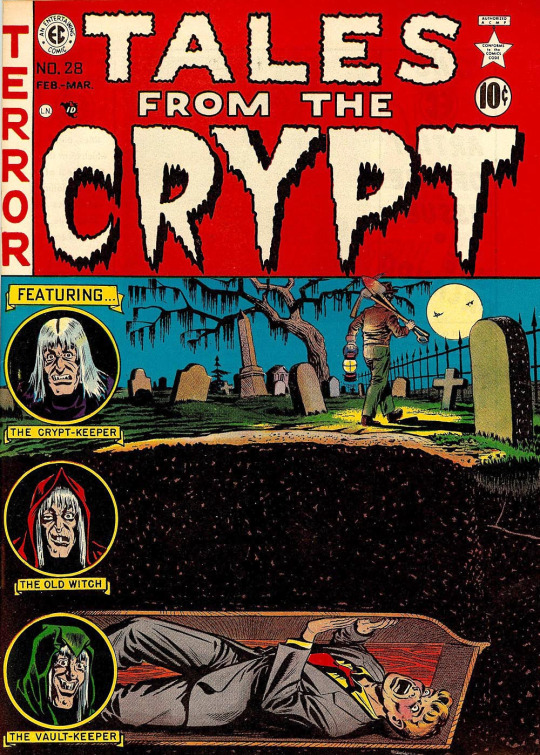
The CCA made it impossible to publish two of the most popular genres in the industry for a generation (the CCA relaxed its stance on horror stuff a bit in the 70s, which is why Marvel trend-chased werewolves and vampires the moment they could get away with it), which not only scrambled the medium (and potentially created space for the Silver Age of superhero comics to flourish) but drove the former titan EC Comics practically out of business. (Indeed, William Gaines of EC Comics believed that the CCA had been specifically worded to drive him out of business.)
So in some ways, the CCA was worse.
#subtexual judaism#cultural history#film history#hays code#comics#comics meta#comics code authority#cinema
307 notes
·
View notes
Text
The top comment:
As of this moment this legislation is in front of the Senate Committee on Commerce, Science, and Transport. I have taken the liberty of compiling a list of all the names and phone numbers of every Senator on that committee, and I've put the names of Senators up for re-election in 2026 in bold.
I will note that this is the third time this legislation has been introduced. In 2022 it ended up dying in Committee when introduced in the Senate and the same happened when it was introduced to the House of Representatives in 2023. Obviously we should all be concerned and take action, but don't go into full blown panic unless it exits committee. At that point I intend to have a list ready of all 100 Senators stating which ones are up for re-election and are considered at risk of losing seats.
Also my advice for calls:
- When talking with Republicans play up the fact that this would force Elon to implement age verification systems on X (yes do call it X during the call). Elon's been threatening to primary Republicans who stand in his way so there's fear of him. Also play up concerns about "Liberals" doxxing people or Chinese hackers.
- When talking with Democrats, play up the connections to Project 2025 and suggest voters will not be happy to see Democrats siding with it.
Republicans:
Ted Cruz, Texas (Chairman) - Phone: (202) 224-5922
John Thune, South Dakota - Phone: (202) 224-2321
Roger Wicker, Mississippi - Phone: (202) 224-6253
Deb Fischer, Nebraska - Phone: (202) 224-6551
Jerry Moran, Kansas - Phone: (202) 224-6521
Dan Sullivan, Alaska - Phone: (202) 224-3004
Marsha Blackburn, Tennessee - Phone: (202) 224-3344
Todd Young, Indiana - Phone: (202) 224-5623
Ted Budd, North Carolina - (202) 224-3154
Eric Schmitt, Missouri - (202) 224-5721
John Curtis, Utah - Phone: (202) 224-5251
Bernie Moreno, Ohio - Phone: (202) 224-3353
Tim Sheehy, Montana - Phone: (202) 224-2644
Shelley Moore Capito, West Virginia - Phone: (202) 224-6472
Cynthia Lummis, Wyoming - Phone: (202) 224-3424
Democrats:
Maria Cantwell, Washington (Ranking Member) - Phone: (202) 224-3441
Amy Klobuchar, Minnesota - Phone: (202) 224-3244
Brian Schatz, Hawaii - Phone: (202) 224-3934
Ed Markey, Massachusetts - Phone: (202) 224-2742
Gary Peters, Michigan - Phone: (202) 224-6221
Tammy Baldwin, Wisconsin - Phone: (202) 224-5653
Tammy Duckworth, Illinois - Phone: (202) 224-2854
Jacky Rosen, Nevada - Phone: (202) 224-6244
Ben Ray Luján, New Mexico - Phone: (202) 224-6621
John Hickenlooper, Colorado - Phone: (202) 224-5941
John Fetterman, Pennsylvania - Phone: (202) 224-4254
Andy Kim, New Jersey - Phone: (202) 224-4744
Lisa Blunt Rochester, Delaware - Phone: (202) 224-2441
••••
script courtesy of the comment section comment:
Here is a script I just wrote - feel free to use!
Hi, my name is [], and I am one of Senator []’s constituents. I live in [city, zip code - leave your full address if leaving a voicemail].
I am calling in regards to a bill that was recently introduced in the Senate Committee on Commerce, Science, and Transport: the SCREEN act.
I am asking Senator [] to either take no action or vote against this bill because of its implications for freedom of speech. [insert one of the other concerns listed above]. Thank you for your time and for listening to my concerns.
#ao3#archive of our own#SCREEN act#the screen act#USA#United States#us polotics#queer#lgbt#lgbtq community#lgbtqia#Netflix#hulu#Disney+#fanfiction.net#paramount+#amazon prime#queer history#hays code#free speech#freedom of speech#first amendment
111 notes
·
View notes
Text

"Films entering the public domain will soon face a significant shift. In 2030, films governed by the Hays Code will start to enter the public domain. The Hays Code was a set of self-imposed industry censorship guidelines enforced from 1934 to 1968 by the Motion Picture Producers and Distributors of America (MPPDA), under the leadership of Will H. Hays. Designed to regulate morality in Hollywood films, the code dictated strict rules on depictions of crime, sex, and “immoral” behavior, shaping the creative boundaries of American cinema for decades.

In a comment on one of the Internet Archive’s social media posts, Bluesky user josiahwhite suggested an interesting idea: that due to the restrictions of the Hays Code “[t]he public domain will get a lot more boring.” While this idea might at first seem true, upon further examination it actually clouds the clever ways in which filmmakers of the time navigated the restrictive influence of the Hays Code to tell creative and compelling stories.
To illustrate this point, we shall explore three films—It Happened One Night, To Be or Not to Be, and Double Indemnity—each of which engaged with the Hays Code in distinct ways. Through these case studies, we will see that while the Hays Code imposed restrictions, it did not stifle creativity. Instead, filmmakers found ingenious and often subversive ways to work within and around these constraints, producing films that remain influential to this day.
[keep reading]
117 notes
·
View notes
Text
Just saw a "feminist" video essay (by someone who just happens to only talk about feminism in relation to cishet white able bodied women) say that the Hays Code was good for women because it "prevented them from sexualizing women by preventing onscreen depictions of sex". Never before has a video said something that made me vocalize my disgust of it's takes, but this did it.
I didn't think I would have to say this but if you defend the Hays code you are horrible and not in any way progressive. And if you don't know what it is please look it up because it's probably the most important piece of history when it comes to all media analysis in the western world.
#196#my thougts#leftist#leftism#feminist#feminism#queer#media criticism#media literacy#media analysis#the internet#social commentary#discourse#proship#fuck antishippers#hays code#film history#cinema#white feminism
620 notes
·
View notes
Text

“THOU SHALL NOT”
This photo was created by Whitey Schafer in 1940 to protest the self-censorship imposed by The Motion Picture Production Code, better known as the Hays Code, by breaking ten of its precepts in one image.
( The woman looks a little like Cloris Leachman to me )
Thinkaboutit
33 notes
·
View notes
Text
youtube
Queen Coke Francis talks about the history of the Hays Code and the wave of puritannical thinking towards media seen among young people these days, sometimes under the guise of social progressivism.
#hays code#queen coke francis#media#media literacy#media consumption#problematic media#puriteens#tenderqueers#the hays code#media discourse#oscars#generation z#gen z#Youtube#history#censorship#free speech#first amendment#moralistic
42 notes
·
View notes
Text
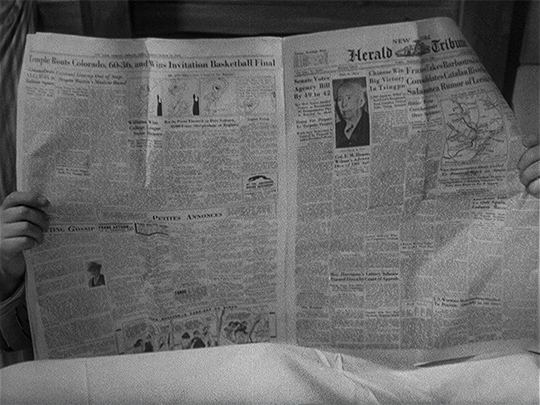
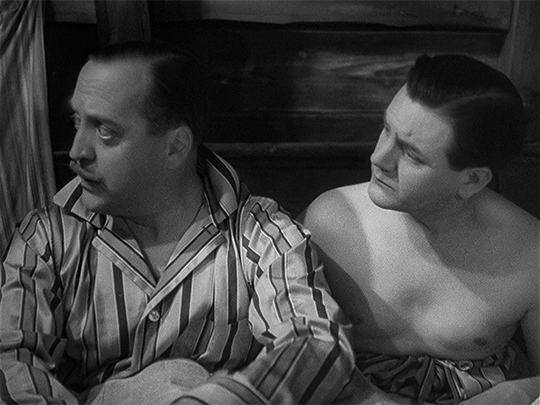
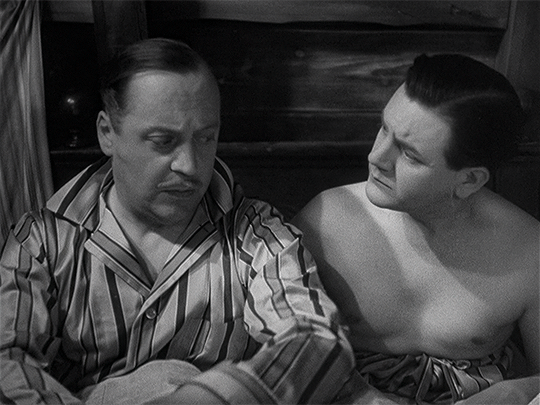
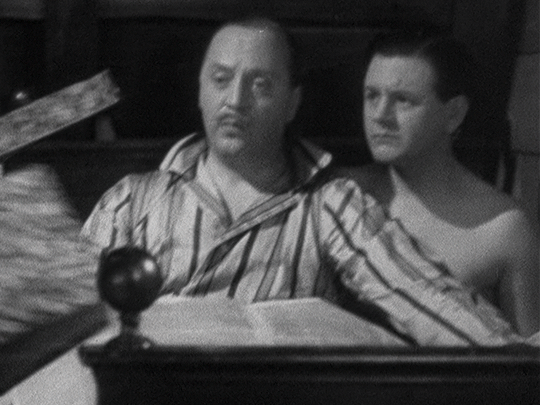
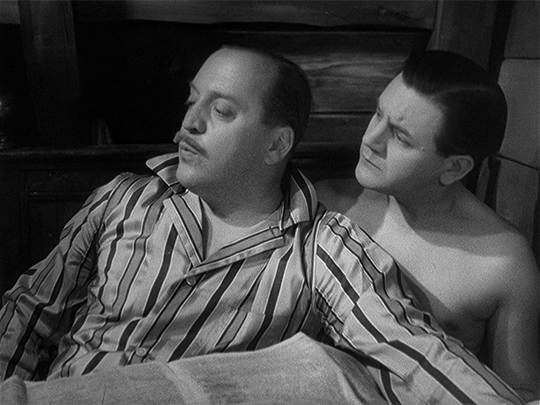
Basil Radford & Naunton Wayne THE LADY VANISHES | dir. Alfred Hitchcock, 1938
#the clever ways hitchcock evades the censors while hiding queers in plain sight needs to be studied#whats that ur doing protecting the modesty of ur husband there mate?#the lady vanishes#alfred hitchcock#basil radford#naunton wayne#film#homoeroticism#romcom#hays code#classic film#classic movies#1930s#spy thriller#the celluloid closet
287 notes
·
View notes
Text
Excerpt from a 1972 interview with Joan Blondell done on the set of Banyon (1972-1973). Taken from Conversations with Classic Film Stars: interviews from Hollywood's golden era (2016) by James Bawden and Ron Miller.







#joan blondell#james cagney#jimmy cagney#broadway#hollywood#old hollywood#classic hollywood#1930s#warner brothers#warner bros#1931#roy del ruth#Blonde Crazy#hays code#production code#censors#improv#ad lib#friendship#love#comfortable
131 notes
·
View notes
Text

Born on this day 120 years ago in Los Angeles’ Chinatown: the truly great trailblazing Chinese American screen diva of the twenties and thirties, stage and television actress and cabaret star Anna May Wong (née Wong Liu Tsong, 3 January 1905 – 10 February 1961. It’s somehow perfect that her Chinese name translates as “Yellow Frosted Willow”). I know the sleek, exquisite and alluring Wong best for the silent British film Piccadilly (1929), as Marlene Dietrich’s insolent travel companion in the Josef von Sternberg masterpiece Shanghai Express (1932), the b-movie Impact (1949) and her final screen appearance (a regrettably demeaning one) as Lana Turner’s sinister housekeeper in Portrait in Black (1960). Her A-list showbiz years were over by World War II but considering the limited options available to her (onscreen interracial romances were forbidden under the Hays Code; the practice of “yellow face” was widespread (Myrna Loy, for example, routinely portrayed Asian women early in her career)), Wong’s achievements are remarkable. As Richard Corliss concludes in a 2005 Time magazine reappraisal (“Anna May Wong Did It Right”), “All this for an actress who by convention was not allowed to kiss her leading man. All this for a Hollywood star who, at the peak of her popularity, could not have bought a house in Beverly Hills. All this for a woman no white man could legally have married in her home state until 1947.” One fun theory is that Wong may have inspired a love-struck Eric Maschwitz’s besotted lyrics to the 1935 standard “These Foolish Things (Remind Me of You).” Pic: portrait of Anna May Wong by Man Ray, 1930.
#anna may wong#man ray#old hollywood#old hollywod glamour#lobotomy room#chinese american#classic hollywood#golden age hollywood#hays code#trailblazer#old showbiz#shanghai express#silent cinema#diva#fierce#glamour
34 notes
·
View notes
Text
i'm not the first to point out that popular film criticism has resurrected hays code level objections to sexuality and morally dubious behaviour, but i think that what lies at the core of this is the idea that films are expected to instruct their viewers on proper behaviour. the viewer becomes an infantilized receiver of moral lessons, which must be taught in simple terms, lest their most unreasonable and twisted interpretations are spread by the masses.
i was incredibly disappointed by many reviews of the barbie movie and of poor things, which seemed unable to let go of their vision of what those films should have been, and how the - in this case feminist - message should have been transmitted, instead of engaging with them as they are.
that doesn't mean that we shouldn't criticise their shortcomings, but we can't project massive expectations onto every movie that comes out that could maybe possibly have some kind of progressive message and judge it by its correctness before we judge it by its value.
self-infantilization is not a good idea in the long run, and artists aren't mother goose.
115 notes
·
View notes